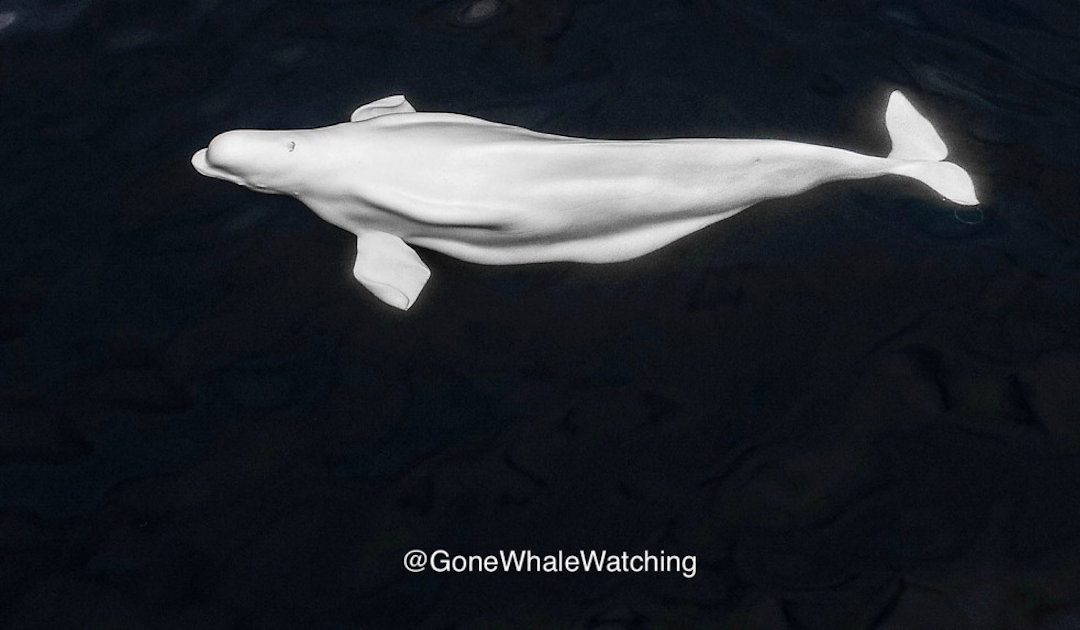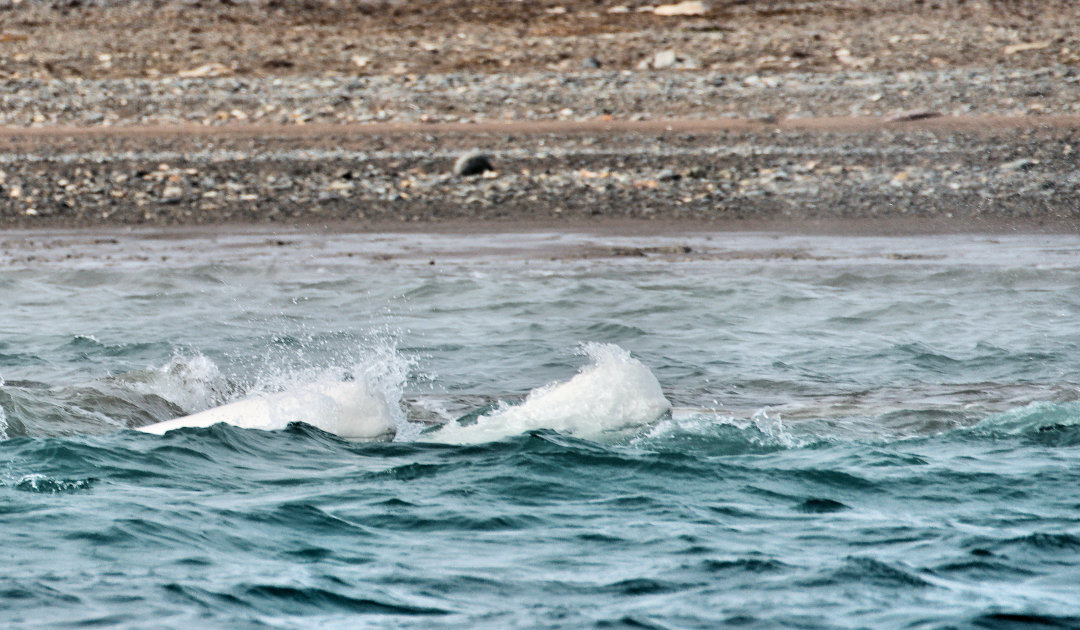
Whales are known for long migrations. Gray whales, for example, migrate annually from the Baja California to the Bering Sea or the Arctic Ocean, a migration of 10,000 kilometers. Many whale species move from spring onwards from their reproductive areas in the south to the far north, where there is enough food waiting for them. Only belugas, also called white whales, spend all their time in the far north. But one specimen has now gone rogue. It was discovered off San Diego, on the coast of Southern California.
The first to discover the beluga were Lisa LaPointe, an American biologist, photographer and polar guide, and Chris Faist, a teacher. Both were on a boat off the coast when they spotted the whale. Lisa contacted the captain of another boat as they were having trouble getting close to the animal. Domenic Biagini, the captain of the other boat, was on tour himself. “I know Lisa’s knowledge is unmatched. She said they kept seeing it, but couldn’t get near it,” Biagini said in an interview. At first hesitant, Biagini yet decided to give it a try and stopped his original tour. After several attempts, the whale suddenly appeared almost 200 meters in front of his boat. “My jaw just dropped to the floor and I had to pick it up again, because I knew exactly what I was looking at,” Biagini continued. He used his drone and took excellent footage of the whale. It have since gone viral and amaze the experts.
Experts from the National Ocean and Atmosphere Administration (NOAA) confirmed that the animal is in relatively good condition, even though it is about 4,000 kilometers from the southernmost known beluga populations. According to Robert Brownell, a NOAA scientist, the southernmost known group is in Cook-Inlet, near Anchorage Alaska. However, most beluga populations live much further north. Belugas are actual true Arctic whales that stay away from warmer areas. In recent years, however, belugas have appeared in unusual places: in 2019, one whale appeared in the River Thames near London, and another animal appeared near Hammerfest in Norway. On the eastern side of North America, belugas were sometimes spotted in the estuary of St. Lorenz stream (Canada). But the appearance of this 15-foot-long animal off the coast of Southern California is unprecedented.

Belugas are found in all Arctic regions and are adapted to a life in the cold and darkness. They have a thick layer of fat that protects them from the cold and a pronounced sense of echolocation for orientation in the dark. They are also among the few animals that have facial expressions because they can purse their lips. Because of the whistling tones they use for communication, the animals are also called “canaries of the sea”. Belugas can grow up to 6 meters long and can weigh up to 1.5 tons. The calves are grey when they are born and then become white when getting older. Inuit hunt belugas as part of their livelihood. The fat (Muktuk, Mattak) is rich in vitamin C and thus prevents scurvy.
Michael Wenger, PolarJournal AG
More on the subject:





